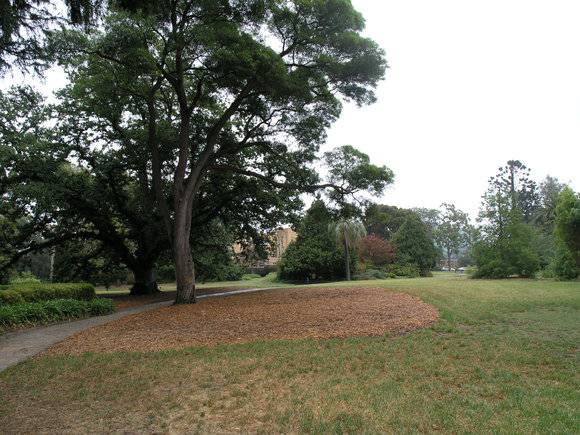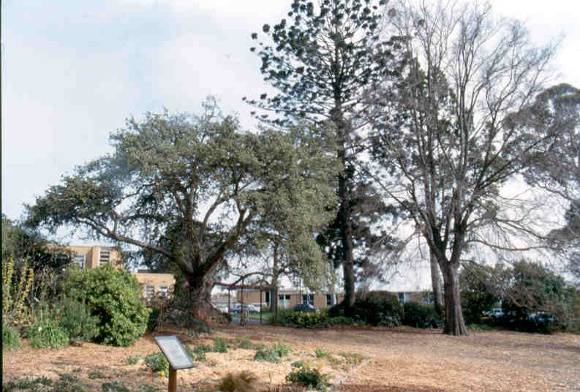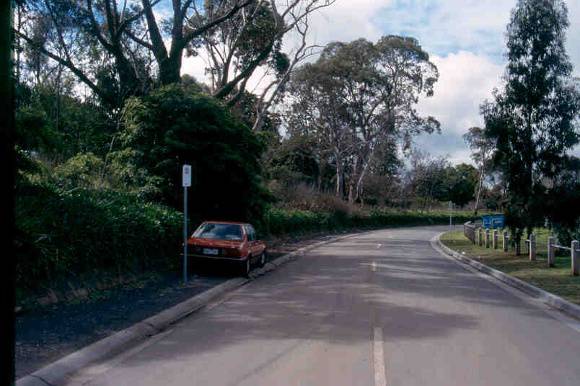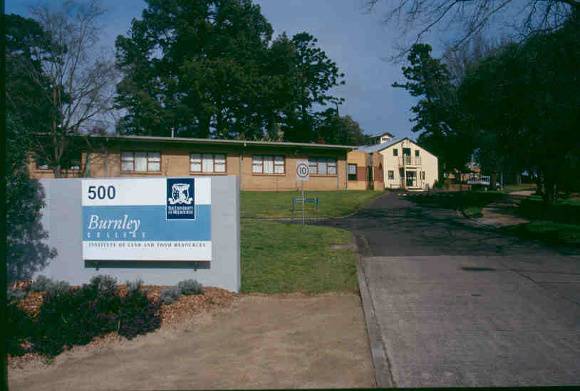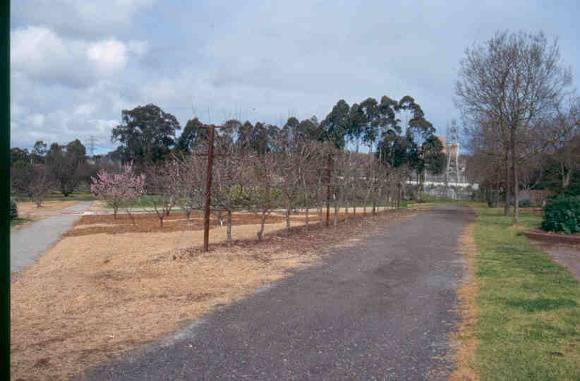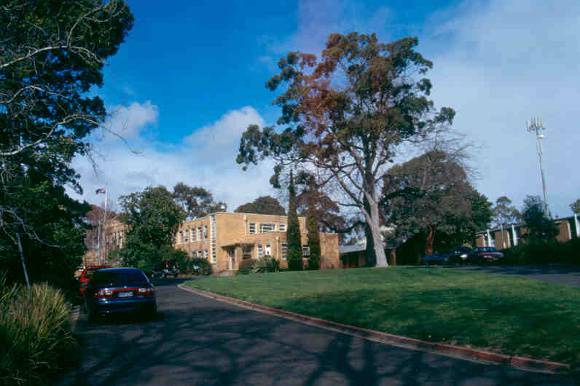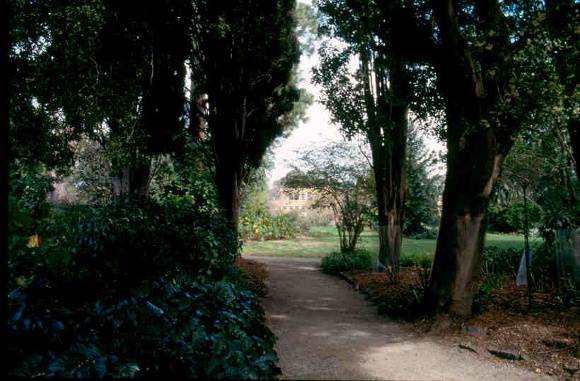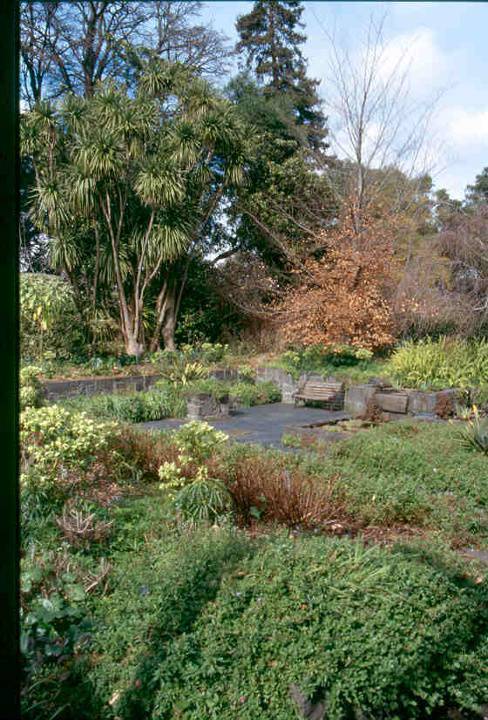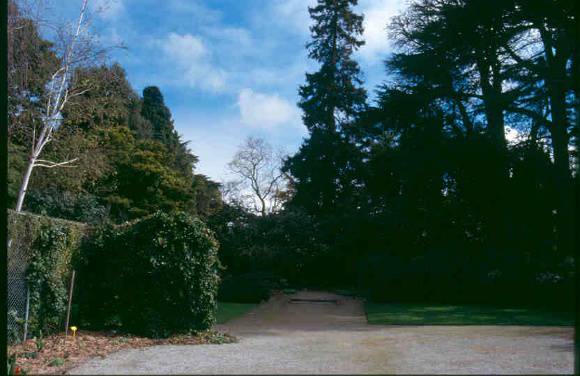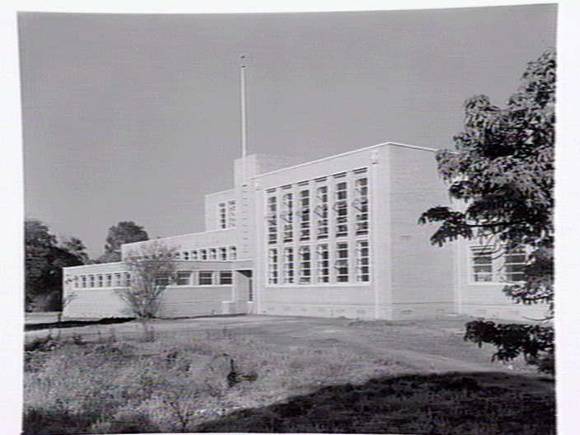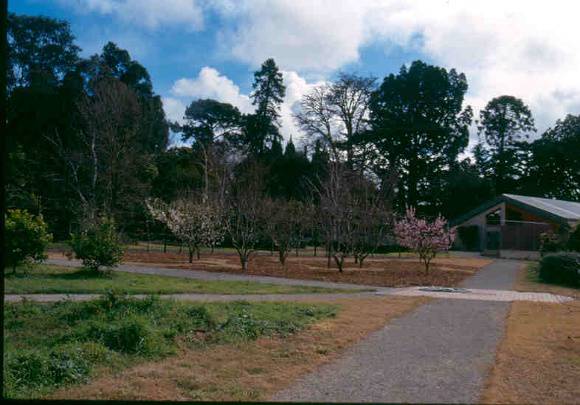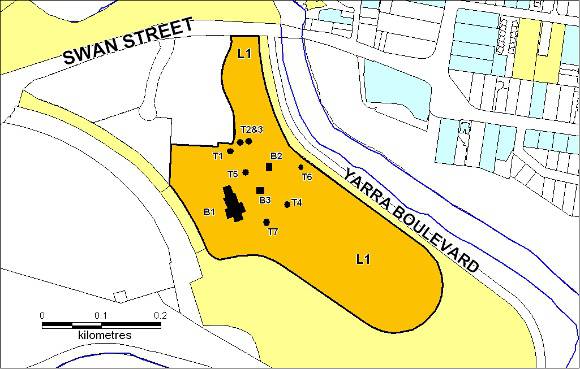| Back to search results » | Back to search page » |
|
BURNLEY GARDENS
Statement of Significance
What is significant? The Victorian Horticultural Society was formed in 1848 with Lieutenant-Governor Charles La Trobe as patron. The committee and members were drawn from the highest echelons of Melbourne society, in contrast to the Victorian Horticultural Improvement Society, which was filled by more practical, full-time gardeners and nurserymen. In 1860 the Society was granted 25 acres in the Survey Paddock in Richmond for ornamental and experimental gardens. A sum of £600 was also granted, which was partly expended on laying out seven acres of the gardens with terraces to a geometric design by Alfred Lynch, landscape gardener of Prahran. The primary aim of the gardens was to provide horticultural instruction and to trial fruit tree varieties for possible commercial exploitation. Unlike the ornamental part of the gardens, access to the orchards in the proving grounds was restricted to members. By the 1870s thousands of varieties of fruit and vines were being cultivated and experimented with. The Society largely relied on grants made by the government in recognition of its contribution to the development of the fruit industry. A substantial exhibition pavilion designed by architect Alfred Kursteiner was added in 1884 and by 1885 the Society was by known as Victoria's Royal Horticultural Society. In 1891 the Society could not service its borrowings, became bankrupt and ownership was passed back to the Crown. The government established the gardens as Australia?s first school of horticulture under the auspices of the Department of Agriculture. In 1899 the school?s first principal, Charles Luffman, redesigned the ornamental gardens in the landscape style, amenity horticulture was first taught and the school pioneered the admission of female students. Edna Walling, one of Australia's pre-eminent garden designers, graduated in 1917, the same year that the school became known as the School of Primary Agriculture and Horticulture. John Cronin, Frederick Rae, Alec Jessep and RTM Pescott were all school principals who went on to become Directors of the Royal Botanic Gardens Melbourne. In 1947 a substantial new administration building built in blonde brick was begun, designed by Percy Everett of the Public Works Department, and the 1884 pavilion, which had been modified for classrooms, was subsequently demolished. There were several changes to the boundaries of the gardens in the twentieth century, resulting from the addition of land at the rear of the administration building in 1952, and the sale of the Department of Agriculture land in north-west section of the Gardens in 1995. Crown ownership of the Burnley Gardens was passed to the University of Melbourne in 1994. The original layout by Lynch survives in the general form of the curved southern boundary of the gardens, in the fundamental division between the ornamental gardens and the former proving grounds, and by the remnant axial path system. Much of Luffman?s scheme for the ornamental gardens survives, including curving path layout, lily-pond, lawns, garden beds and vistas. There is a rose garden, perennial border, Australian native garden, cactus garden, and orchard. The tree collection contains a mixture of species and of particular interest are the Sequoia sempervirens, Agathis robusta, two Ulmus procera, Quercus suber Quercus robur, and Eucalyptus cladocalyx. How is it significant? Burnley Gardens is of historical, scientific (horticultural) and aesthetic significance to the State of Victoria. Why is it significant? Burnley Gardens is historically significant for its connections with the Royal Horticultural Society of Victoria, which within the Burnley Gardens took pioneering steps in the acclimatisation of fruit trees to Victoria. The gardens are historically significant as Victoria and Australia's first school of horticulture. The influence of Burnley-trained horticulturalists is evident across the parks and gardens of Australia. Noted designers include Edna Walling, Olive Mellor, Emily Gibson, Grace Fraser, Mervyn Davis and Margaret Hendry. Four principals, Cronin, Rae, Jessep and Pescott subsequently became Directors of Royal Botanic Gardens Melbourne, and Noel Lothian became Director of the Adelaide Botanic Gardens. Burnley Gardens is scientifically (horticulturally) significant for its diverse collection of mature trees including an impressive collection of Australian rainforest trees, Australian native trees and landscaped garden, many large mature broadleaf trees and conifers, and palms. The planting includes some of the oldest and finest trees in Victoria, an 1861 Sequioa sempervirens and Agathus robusta, two remaining Ulmus procera (1860s) from the proposed Swan Street extension planting, a1890 Quercus suber, an outstanding Quercus robur dominating the oak lawn, and a landmark Eucalyptus cladocalyx at the end of the entrance drive. The planting includes several rare and uncommon plants including Combretum caffrum, Pittosporum undulatum Variegatum, and a collection of Western Plains flora. Also of importance are two rows of pears (pre 1934) in the orchard. Burnley Gardens is aesthetically significant for the design of its ornamental gardens, first laid out as grounds for the public in 1860. Layers of development still clearly show some of the original axial layout, and the contrasting landscape style employed by Luffman from 1899, to produce a landscape of originality and diversity. The Gardens exhibit outstanding landscape qualities, with large sweeping lawns dotted by mature specimen trees and palms, two lily ponds designed by Luffman and edged with pollarded Crack Willows, serpentine gravel paths, richly planted shrubberies, an Ellis Stones Rockery and an Australian native garden incorporating several remnant River Red Gums. The planting of contrasting deciduous and evergreen trees, palms, conifers, shrubberies, rose garden, cactus garden, and Australian native garden form to provide an outstanding landscape of plant variety and colour, and seasonal interest. It is comparable to a botanic garden, and forms a valuable recreation, education and research facility.
Group
Education
Category
School - Agricultural


